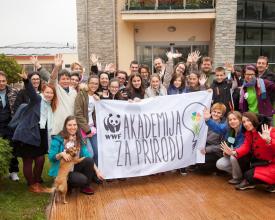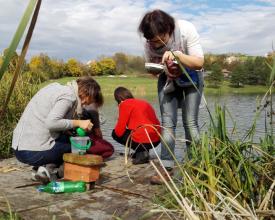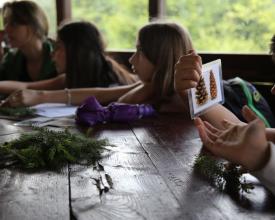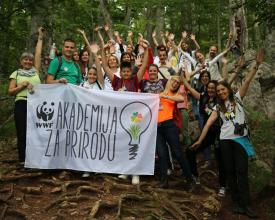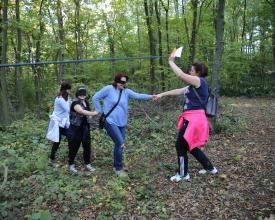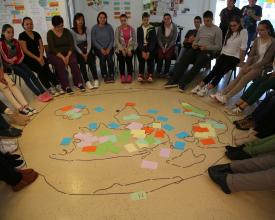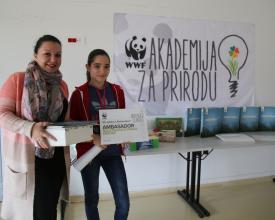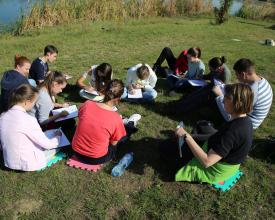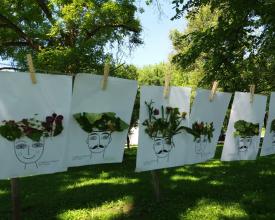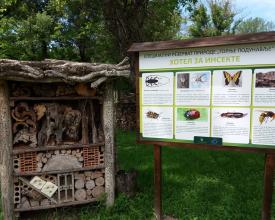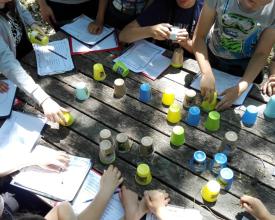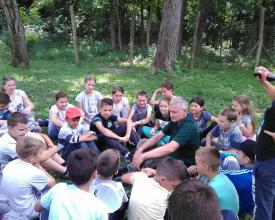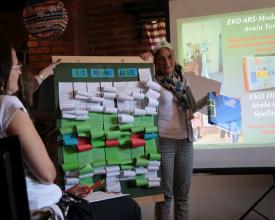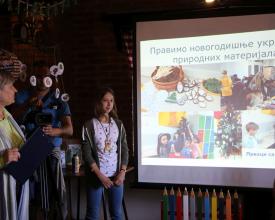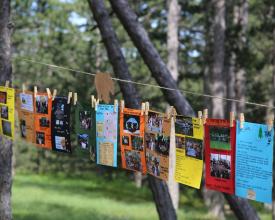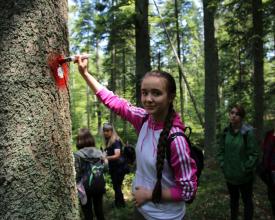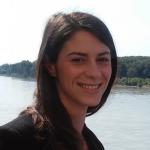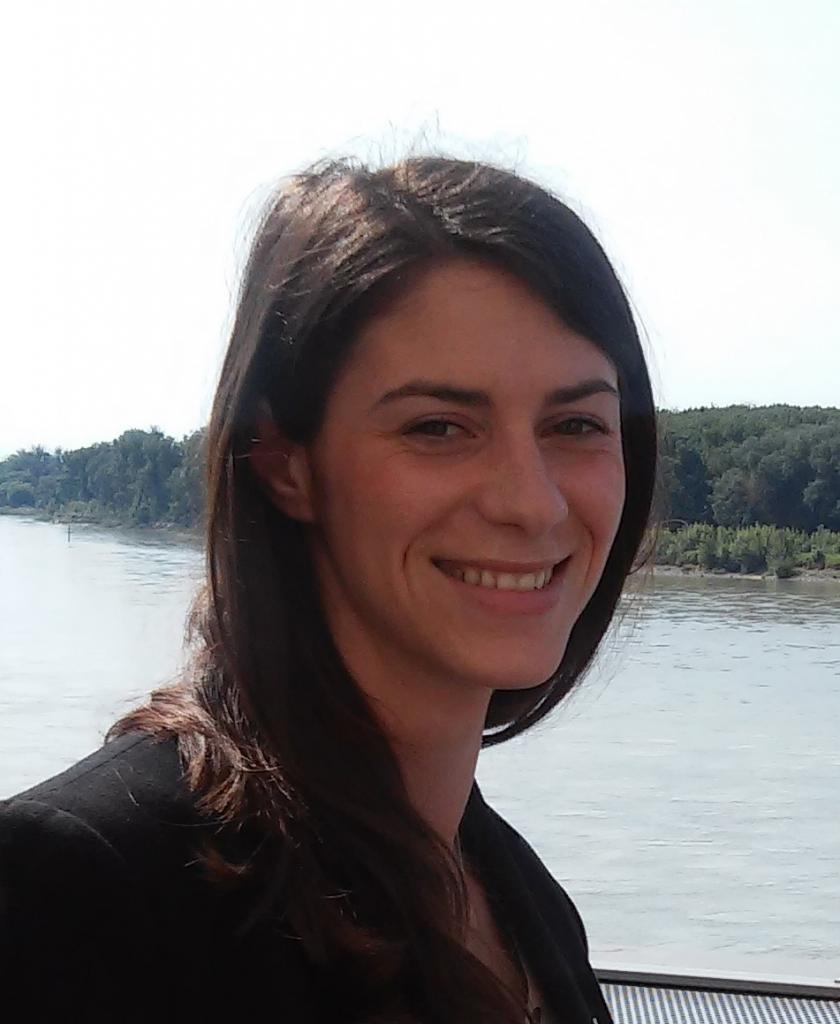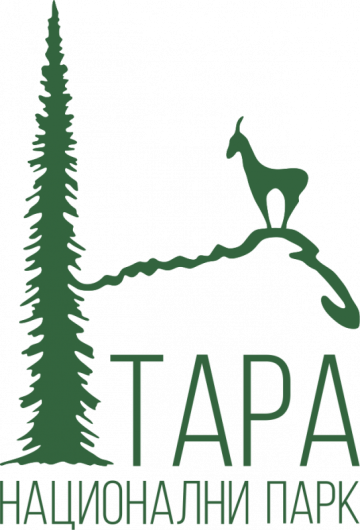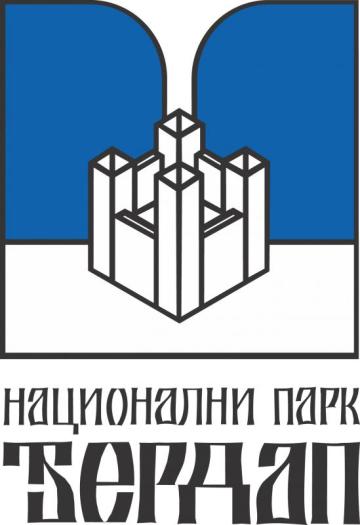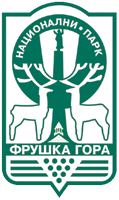
WWF Nature Academy - coopération entre les écoles et les zones protégées
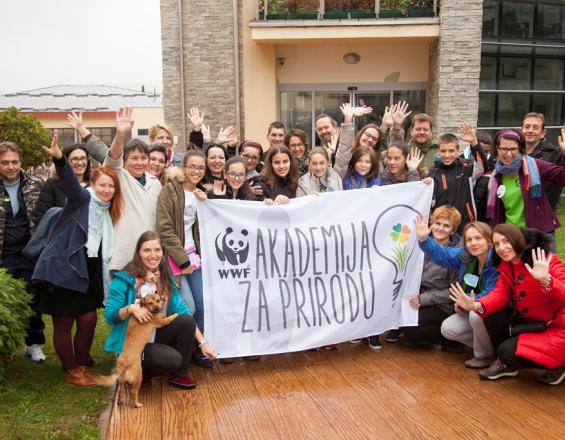
La"WWF Nature Academy" est un programme d'éducation à l'environnement d'une durée de 8 mois qui vise à développer les compétences clés des enseignants et de leurs élèves qui conduisent à une citoyenneté active pour la conservation de la nature. Chaque école participant au programme met en œuvre un projet environnemental en coopération avec la gestion de la zone protégée située à proximité. Depuis 2016, nous avons engagé 20 écoles en Serbie qui sont devenues des ambassadeurs pour l'une des 5 zones protégées impliquées dans le programme. Au cours du programme, les participants se familiarisent avec les zones protégées, l'empreinte écologique, l'apprentissage par projet et par l'expérience, ainsi qu'avec les relations avec les médias afin de promouvoir leurs résultats. Dans le cadre des 20 projets scolaires mis en œuvre, 110 enseignants et 333 élèves ont participé activement à la mise en œuvre de diverses activités et environ 3 900 élèves ont bénéficié de ces activités.
Contexte
Défis à relever
- Manque de classes de qualité dans la nature.
- Manque de programmes éducatifs dans les zones protégées.
- Les enseignants ne disposent pas d'ouvrages de référence, de lignes directrices ou de recommandations (programme d'études, plan de travail) pour enseigner en plein air.
- La plupart des parents estiment que les excursions dans la nature ne sont pas sûres ou ne peuvent pas les financer.
- Les agences de voyage ont une grande influence sur les itinéraires des excursions scolaires et ne tiennent pas compte de la qualité du programme d'excursion.
Emplacement
Traiter
Résumé du processus
Les blocs de construction sont créés de manière à ce que chacun d'entre eux soit construit sur le précédent et ils doivent être synchronisés avec l'année scolaire.
La sélection des AP et des écoles est suivie d'une formation intensive qui permet aux écoles et aux AP de commencer à coopérer (bloc 1), de définir leur objectif commun et d'élaborer le plan détaillé du projet scolaire (bloc 2). La mise en œuvre du projet scolaire et l'obtention de résultats ne sont possibles que si les écoles et les aires protégées communiquent régulièrement et se soutiennent mutuellement pendant que certaines activités sont mises en œuvre dans l'aire protégée.
Si les modules 1 et 2 sont bien mis en œuvre et donnent les résultats escomptés, il est possible d'organiser l'événement final qui réunit tous les participants pour qu'ils échangent leurs succès, leurs expériences, leurs défis et les avantages qu'ils ont tirés du projet.
Blocs de construction
Programme d'éducation pour les écoles et les zones protégées
Le programme éducatif vise à développer les compétences clés des enseignants et de leurs élèves qui conduisent à une citoyenneté active pour la conservation de la nature. Chaque école participant au programme met en œuvre un projet environnemental en coopération avec la direction de la zone protégée située à proximité.
Le programme d'éducation est divisé en deux phases :
1. Développement du guide WWF Nature Academy avec 5 chapitres : zones protégées, empreinte écologique, participation civique active, gestion de projet et travail avec les médias.
2. Formation de cinq jours pour les enseignants et les étudiants utilisant le guide de l'Académie WWF précédemment développé. La formation met l'accent sur les activités interactives et pratiques dans la nature. Après la formation, les écoles deviennent des ambassadeurs de la zone protégée près de laquelle elles vivent. Chaque école reçoit une plaque d'ambassadeur et une "boîte à outils de l'explorateur" contenant divers outils et matériels didactiques, y compris le guide de l'Académie WWF Nature.
Facteurs favorables
Institutionnel :
1. Les zones protégées disposent d'une personne responsable de l'éducation.
2. Les écoles intéressées sont prêtes à participer à un programme de 8 mois.
3. Bonne coopération entre les partenaires du projet - communication régulière, développement conjoint du programme et mise en œuvre conjointe des activités.
Capacités internes de l'organisation chargée de la mise en œuvre :
1. Expérience dans le domaine de l'éducation et forte motivation.
2. Bonnes compétences en matière de facilitation, de modération et de logistique du coordinateur de projet.
3. Consacrer beaucoup de temps aux déplacements dans les zones protégées et les écoles.
Leçon apprise
- Il est important que chaque zone protégée dispose d'une personne de contact dédiée aux programmes éducatifs.
- Si les aires protégées n'ont pas de personnel formé pour mettre en œuvre des activités éducatives, trouver ou organiser des formations supplémentaires pour eux (interprétation de la nature, activités de plein air, apprentissage par l'expérience).
- Inclure deux enseignants de chaque école ambassadrice, car il peut arriver que l'un d'entre eux soit absent pendant une longue période, ce qui garantit une mise en œuvre continue du projet. Cela permet d'assurer une mise en œuvre continue du projet et, si possible, d'inclure des enseignants des classes inférieures et supérieures.
- Organiser une visite de l'équipe de projet de l'école ambassadrice à l'AP immédiatement après la formation afin d'entamer la coopération et de développer les activités du projet ensemble.
- Organiser des visites obligatoires du coordinateur du projet dans chaque école ambassadrice au cours de l'année scolaire.
- Impliquer les élèves des classes inférieures afin qu'ils restent activement impliqués dans l'école pendant plusieurs années - cela encourage l'éducation par les pairs et développe les compétences de leadership.
Relier les zones protégées aux écoles locales
La coopération entre les aires protégées et les écoles locales a été bénéfique pour les deux parties. Le personnel de l'AP met en œuvre des activités éducatives conformément à son plan de gestion et trouve dans les écoles locales un partenaire solide pour promouvoir les valeurs naturelles et culturelles des AP auprès de la communauté locale. Les écoles ont la possibilité de mettre en œuvre des activités de plein air et d'enrichir les activités extrascolaires de l'école.
La coopération entre l'AP et les écoles comprend
1. les équipes de projet des écoles ambassadrices, en coopération avec le point focal de l'AP, développent un programme détaillé pour le projet scolaire. Le programme comprend des activités spécifiques et un calendrier de mise en œuvre.
2. La mise en œuvre des activités du projet se déroule de décembre à mai. Les activités peuvent être mises en œuvre dans l'école (pendant les mois d'hiver - ateliers, enquêtes, travaux artistiques) ou à l'extérieur dans les zones protégées (pendant les mois de printemps) et doivent inclure autant d'élèves que possible.
3. Les écoles ambassadrices promeuvent les valeurs des aires protégées et les résultats de leurs projets auprès des médias locaux.
4. Chaque équipe de projet rédige le rapport final et le soumet au WWF avant l'événement final.
Facteurs favorables
1. Les zones protégées ont intégré des activités éducatives dans leur gestion et leur plan annuel.
2. Les écoles doivent être informées du programme à temps afin d'intégrer l'activité dans le plan scolaire annuel.
3. Les aires protégées et les écoles doivent planifier les activités à temps afin d'avoir suffisamment de temps pour les mettre en œuvre au cours de l'année scolaire.
4. Tous les élèves doivent obtenir le consentement de leurs parents ou de leur tuteur légal pour participer au projet, car celui-ci implique des activités en dehors de l'école et l'utilisation de matériel photo et vidéo.
Leçon apprise
- Organiser des visites des coordinateurs de projet dans chaque école ambassadrice ou des visites conjointes dans les zones protégées.
- Implication L'avantage de travailler avec des enseignants (classes 1 à 4) dans le cadre de la WWF Nature Academy contribue à une plus grande implication des parents et des grands-parents dans les activités liées au projet.
- L'invitation à coopérer avec les écoles ne doit pas s'adresser uniquement aux enseignants de biologie ou de sciences naturelles. Les cours sur la nature devraient être interdisciplinaires. L'intégration de professeurs d'art, de musique ou de langues dans les équipes de projets scolaires a été très bénéfique, car elle a permis de développer des compétences interdisciplinaires.
- Les écoles travaillant avec des enfants handicapés peuvent également être impliquées dans le projet, moyennant quelques ajustements mineurs pour la mise en œuvre de leur projet.
- Lors de la planification de plusieurs générations d'écoles ambassadrices, il est bon de prévoir une réunion de toutes les générations d'enseignants et d'élèves ambassadeurs à un moment donné, car cela renforce le lien entre les écoles et les aires protégées, mais aussi entre les écoles ambassadrices. Cette réunion doit être organisée en plein air, dans une AP, et comporter de nombreuses activités de renforcement de l'esprit d'équipe et d'exploration.
Présentation des résultats et mise en réseau des AP et des écoles
Le cycle de l'Académie de la nature du WWF se termine par un événement final au cours duquel toutes les écoles ambassadrices présentent les résultats de leurs projets et la zone protégée dont elles sont les ambassadrices. L'événement final est organisé par l'une des zones protégées participantes et a pour but de partager les succès, les leçons apprises et de promouvoir le travail en réseau entre les écoles ambassadrices et les zones protégées. Un élément important de l'événement final est la conférence de presse pour les médias locaux et nationaux.
Au cours de l'année scolaire, les écoles ambassadrices partagent leurs résultats sur la page Facebook de la WWF Nature Academy (un groupe fermé pour les participants au projet), sur les sites web et les groupes Facebook de leur école et les communiquent aux médias locaux en collaboration avec l'aire protégée.
Après l'événement final, chaque école ambassadrice devient le mentor d'une nouvelle école participant à l'académie et lui remet la "boîte de mentorat" contenant des suggestions, des messages de motivation et des souvenirs faits à la main. De cette manière, les écoles ambassadrices d'une même zone protégée commencent à coopérer et, avec le temps, construisent un réseau d'écoles de la zone protégée.
Très important à la fin du cycle de l'académie : célébrer le succès lors d'une fête thématique sur la biodivesité !
Facteurs favorables
1. Le directeur de l'école soutient la participation et permet aux enseignants de mettre en œuvre des activités en dehors de l'école.
2. Tous les élèves doivent obtenir le consentement de leurs parents ou de leur tuteur légal pour participer au projet, car celui-ci implique des activités en dehors de l'école et l'utilisation de matériel photo et vidéo.
3. Bonne coopération entre les zones protégées et leurs écoles ambassadrices, soutien des zones protégées dans la mise en œuvre des activités du projet.
4. Volonté de l'AP d'accueillir l'événement final.
Leçon apprise
- Envoyer des instructions claires aux écoles ambassadrices sur la manière de présenter les résultats de leur projet et leur zone protégée.
- Commencer à organiser l'événement final avec l'AP à temps et définir clairement qui fait quoi.
- Faire en sorte que des représentants de toutes les zones protégées concernées soient présents lors de l'événement final.
- Si possible, inclure davantage d'étudiants des écoles ambassadrices hôtes, car cela n'a pas d'incidence sur le budget de l'événement et donne à davantage d'étudiants l'occasion de présenter les résultats qu'ils ont obtenus.
- Si possible, aider les écoles ambassadrices à organiser une réunion avec leur école d'accueil avant le début de la prochaine année scolaire.
Ressources
Impacts
La WWF Nature Academy propose une approche innovante pour faire progresser les compétences en matière d'éducation à l'environnement et de citoyenneté active et offre des opportunités et des modèles pour un degré plus élevé d'association entre les zones protégées et les communautés locales. Les parents et les familles au sens large dont les enfants (plus de 3900) faisaient partie des écoles ambassadrices ont été couverts par le programme. Cela a permis de sensibiliser davantage les habitants à l'importance de la zone protégée dans leur région. Les résidents locaux sont devenus des ambassadeurs des aires protégées et ont changé d'attitude à l'égard de la protection de la nature. Pour la première fois en Serbie, 20 écoles locales et leurs 110 enseignants ont établi des liens avec 5 aires protégées situées à proximité et ont commencé à collaborer à l'éducation à la nature. L'académie du WWF a initié une coopération entre le secteur de la protection de la nature et le secteur de l'éducation (ministère de l'éducation). Le plan de travail de l'académie WWF, ses approches et ses méthodes ont été intégrés dans les programmes des écoles participantes, ce qui a permis de pérenniser le programme. Certaines parties du programme ont été reproduites en Bosnie-Herzégovine et au Monténégro.
Bénéficiaires
# Nombre d'écoles - 20
# Nombre d'enseignants formés - 23
# Nombre d'étudiants formés - 20
# Nombre d'enseignants impliqués dans des équipes de projet - 110
# Nombre d'élèves impliqués dans des équipes de projet - 333
# Nombre d'élèves touchés par les activités scolaires - 3903
# Nombre d'acteurs locaux impliqués dans les activités - 95
Objectifs de développement durable
Histoire
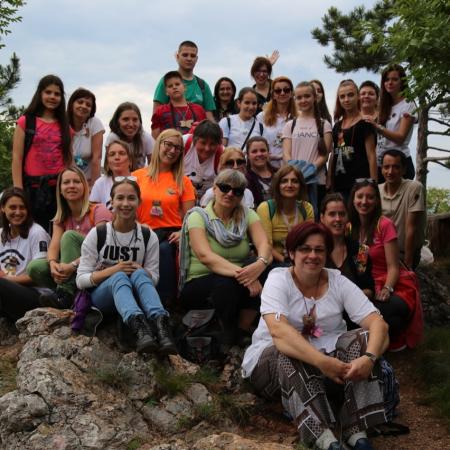
"Il y a eu beaucoup de difficultés au début, mais ma plus grande satisfaction a été lorsque les élèves m'ont demandé ce que nous ferions ensuite. Cela m'a montré que nous avions fait jaillir cette énergie créative en eux", a déclaré fièrement Aleksandra Đurić Karaklić, professeur de biologie au lycée Josif Pančić Gymnasium de Bajina Bašta, en expliquant le processus de création du "mini jardin de Tara" dans la cour de l'école. Cet établissement secondaire, l'une des écoles ambassadrices du parc national de Tara, avait pour objectif de réunir les élèves et les enseignants des écoles situées à proximité des zones protégées et de travailler avec la direction de ces dernières sur la manière de protéger l'environnement qui les entoure.
"Je n'ai jamais eu la moindre idée de tout ce qu'il y a à Tara, même si je venais régulièrement skier ici avec mes parents quand j'étais plus jeune. Je fais partie du club de biologie de l'école et, à l'académie du WWF, j'ai appris à connaître toutes les plantes et tous les animaux protégés de cette montagne, et ce que cela signifie pour notre région et pour l'ensemble de la Serbie. Par exemple, c'est ici que pousse l'épicéa de Serbie, que l'on ne trouve plus nulle part ailleurs dans les Balkans", explique Jovana Katanić.
Pour Jovana et son camarade Matija Žuža, rester après l'école n'est pas un problème. Ils sont heureux de pouvoir laisser quelque chose derrière eux une fois qu'ils auront quitté l'école, et ils sont ravis de voir des élèves d'autres écoles venir visiter le mini jardin de Tara. Matija a déclaré que ce n'est qu'après s'être impliqué dans le projet qu'il a commencé à remarquer la nature qui l'entoure. Mais il a également commencé à remarquer des problèmes.
"J'ai compris pourquoi cette zone est protégée, il y a certainement une raison. Nous devons faire plus attention à la manière dont nous agissons dans la nature et envers la nature. Je vois souvent des déchets lorsque je me promène et je pense que les gens ne sont pas conscients de l'écologie. J'ai commencé à gronder mes parents et d'autres personnes si je les vois jeter des déchets dans la rue ou ailleurs", explique Matija.
"Nous avons fait don du matériel nécessaire à l'école, tandis que notre personnel du parc a travaillé avec les élèves pour concevoir le jardin et planter les jeunes arbres. La coopération avec les écoles locales est un axe stratégique pour nous, car les jeunes sont plus prompts à accepter et à maîtriser de nouvelles connaissances et idées, et à les partager avec enthousiasme avec leur entourage. À l'avenir, cela permettra d'établir de meilleurs liens entre le parc national de Tara et la population locale et d'améliorer la compréhension du public sur les questions liées à la conservation de la nature", a déclaré Milanović, chef du département de la sensibilisation et du tourisme.

